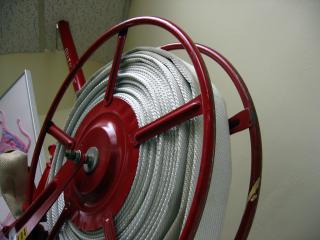Richard Alley’s The Two Mile Time Machine: Ice Cores, Abrupt Change, and Our Future provides a good, though slightly dated, explanation of the science of ice core sampling, as a means for studying the history of Earth’s climate. Alley focuses on work conducted in Greenland prior to 2000. The book combines some surprisingly informal background sections with some rather technical passages about isotopic ratios and climatic cycles. Overall, it is a book that highlights the scientific tendency to dive right into the details of one area of inquiry, while skimming over many others that actually relate closely – especially if you are trying to use the science as the basis for sound decision-making.
This book does not really warrant inclusion in the first tier of books to read on climate change, but it certainly provides some useful background for those trying to develop a comprehensive understanding of the area. Arguably, the best contribution it makes is explaining the causes and characteristics of very long climatic cycles: those stretching over millennia or millions of years, with causes including orbital variation, continental drift, and cryosphere dynamics.
Given the amount of new data and analysis that has been undertaken since this book was published, a new edition may well be warranted. In particular, the very tenuous conclusions of Alley’s concluding chapters should either be revised, or defended in the fact of the new data.


This book does not really warrant inclusion in the first tier of books to read on climate change, but it certainly provides some useful background for those trying to develop a comprehensive understanding of the area.
Which books would you say are the most essential ones for learning about the subject area?
Past reconstructions: problems, pitfalls and progress
Filed under:
* Paleoclimate
* Climate Science
Many people hold the mistaken belief that reconstructions of past climate are the sole evidence for current and future climate change. They are not. However, they are very interesting and useful for all sorts of reasons: for modellers to test out theories of climate change, for geographers, archaeologists and historians to examine the impact of climate on past civilizations and ecosystems, and for everyone to get a sense of what climate is capable of doing, how fast it does it and why.
According to the researchers, the first abrupt warming period beginning at 14,700 years ago lasted until about 12,900 years ago, when deep-freeze conditions returned for about 1,200 years before the onset of the second sharp warming event. The two events indicate a speed in the natural climate change process never before seen in ice cores, said White, director of CU-Boulder’s Institute for Arctic and Alpine Research.
“We are beginning to tease apart the sequence of abrupt climate change,” said White, whose work was funded by the National Science Foundation’s Office of Polar Programs. “Since such rapid climate change would challenge even the most modern societies to successfully adapt, knowing how these massive events start and evolve is one of the most pressing climate questions we need to answer.”
Here is a video of a good talk Richard Alley gave on the climate system.
“Essentially it’s the weatherability of the surface, how much is coming out of volcanoes, and what we’re doing with organic carbon. [These are] what controls CO2 across geologic time.
[Processes involving continental drift] take 50 million years or 100 million years. And so you’re going to see big changes in CO2 over long times as you tweak these things.
Evolution: when you get land plants it changes – you can now make coal. If you don’t have land plants, you can’t make coal. If you can make coal, you can bury organic carbon. So evolution is going to affect carbon over long times and mountain building and plate tectonics… are going to affect CO2.”
Alley also provides a nice explanation for why, historically, changes in temperature precede changes in CO2 concentrations a bit. This is because the original temperature change is caused by orbital variation, CO2 responds to that small change, and a larger change results.
He uses the analogy of credit card debt. Interest lags debt. You overspend and go into debt, interest accumulates on the debt and the debt grows. You cannot predict the quantity of debt at any particular time without taking interest into consideration.
Similarly, some orbital changes cause warming, which causes CO2 to rise, which causes more warming. You cannot explain what happened to the climate system without taking that reaction into account.
That explanation is about 37 minutes into the video.
On the question of how much warming would result from burning all the fossil fuels, Alley explains that there is considerable uncertainty about the total size of global fossil fuel reserves.
He specifically identifies oil shales as a big reserve, and says that if we burn all of it there is “some chance of getting above [the] Cretaceous level.” At that stage in Earth’s history, mean global temperatures were 37˚C to 38˚C.
According to NASA, the “[b]est estimate for absolute global mean for 1951-1980 is 14.0˚C” – about 23˚C cooler than the Cretaceous.
As Alley says: “You can think of a ‘burn it all’ future getting really hot.”